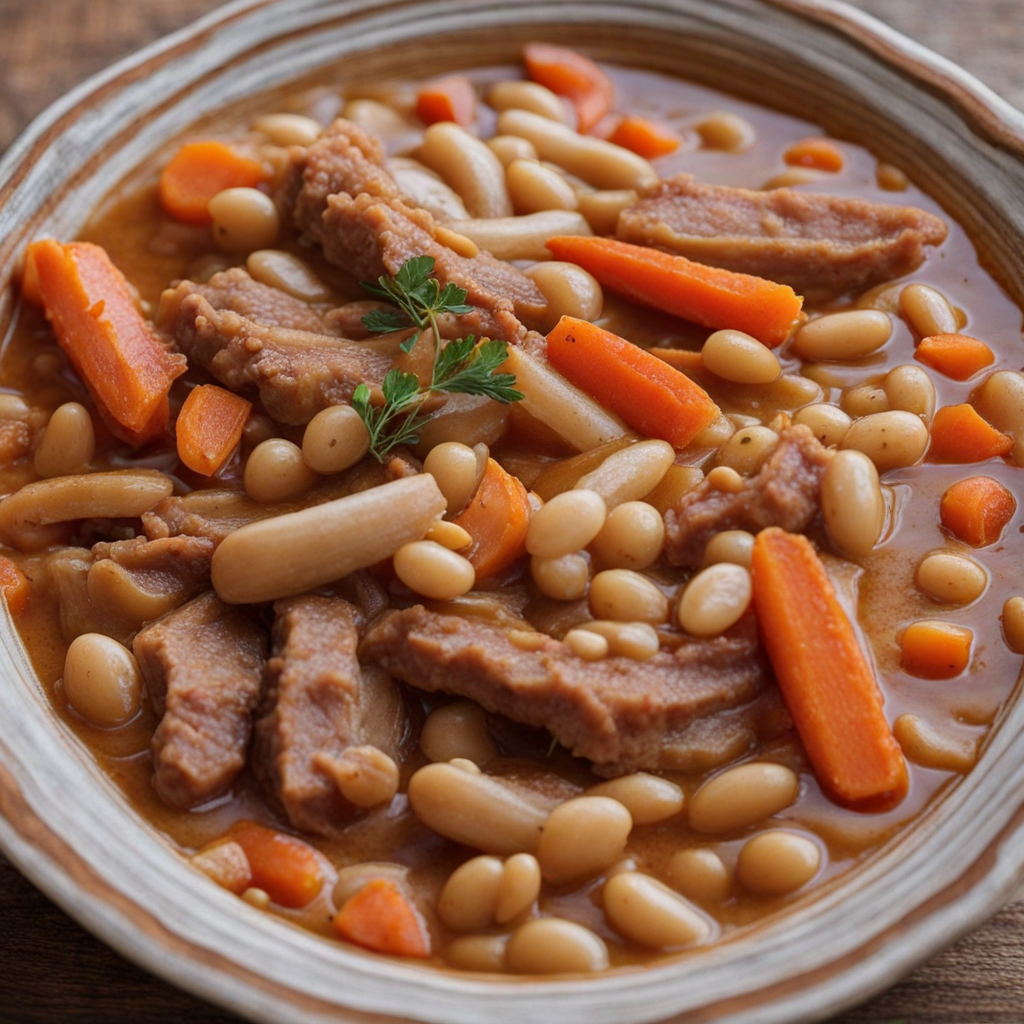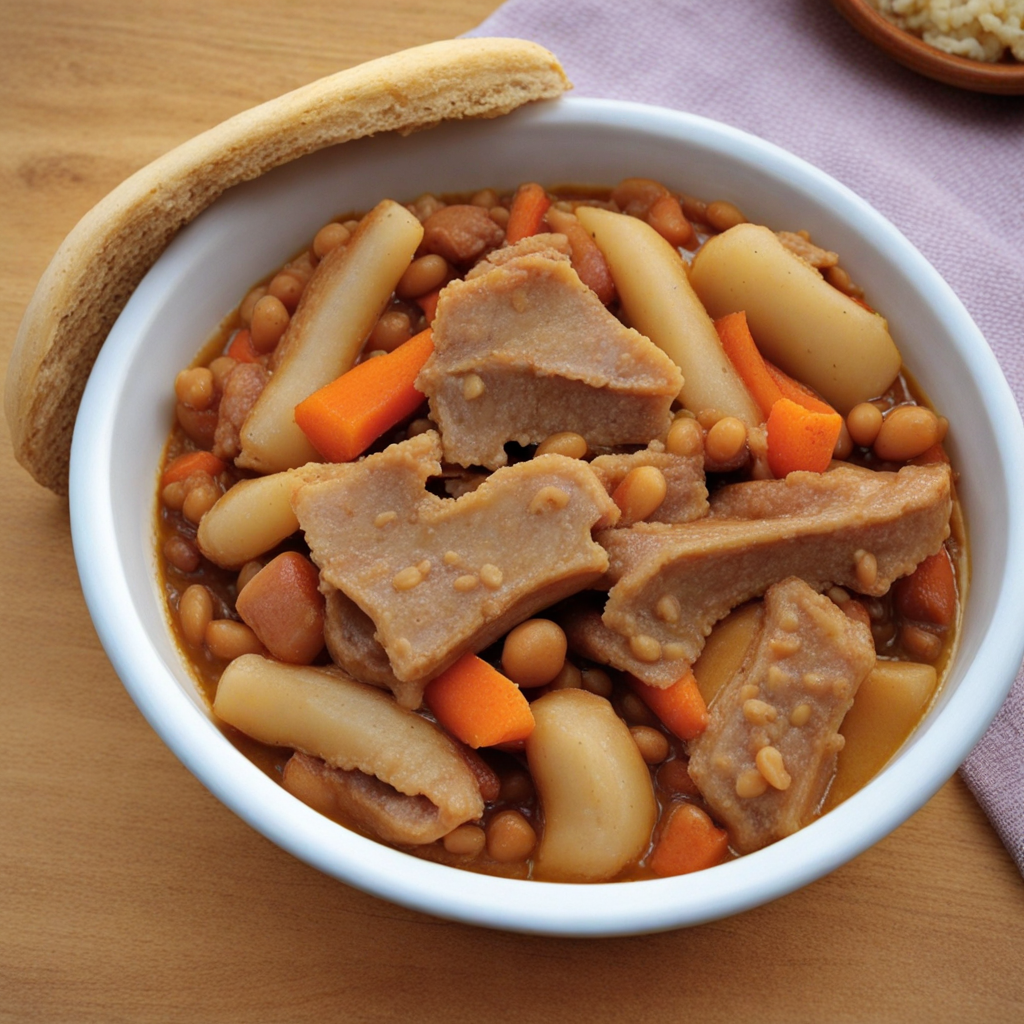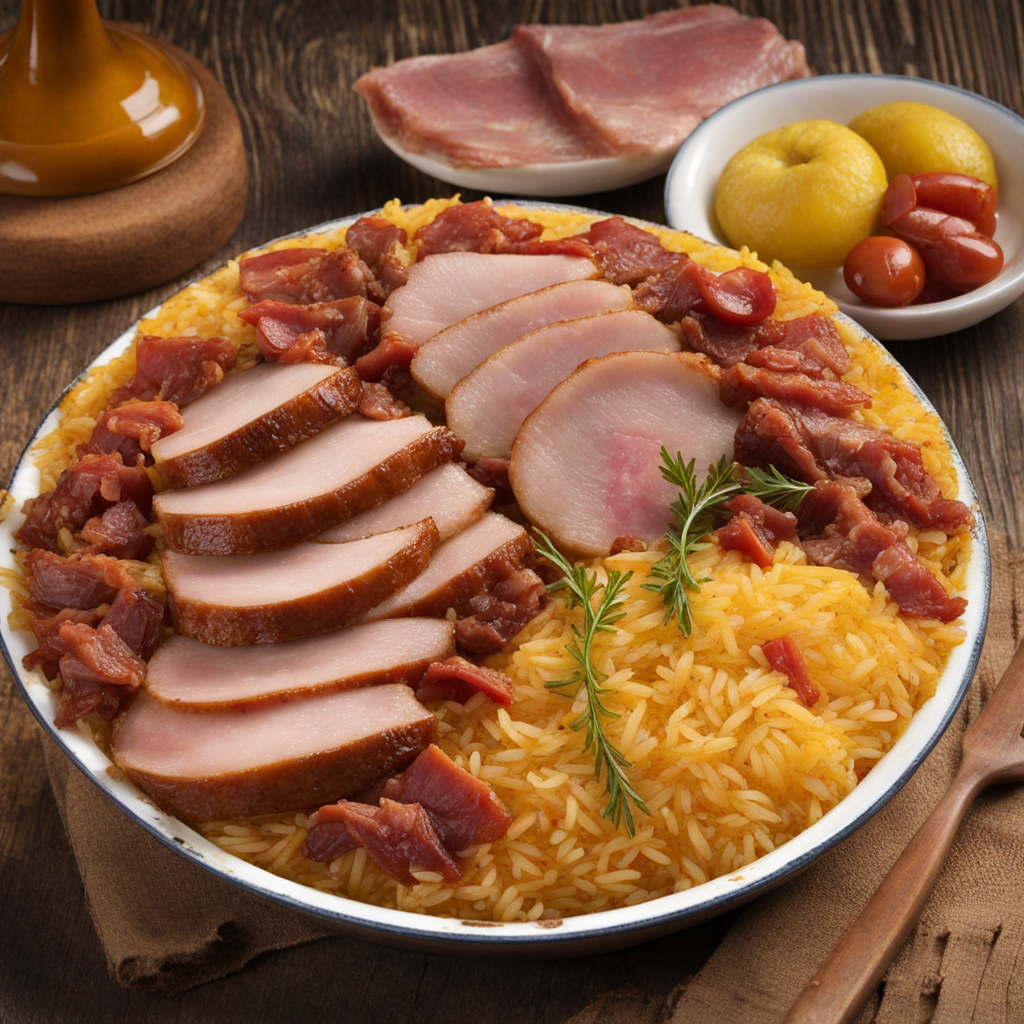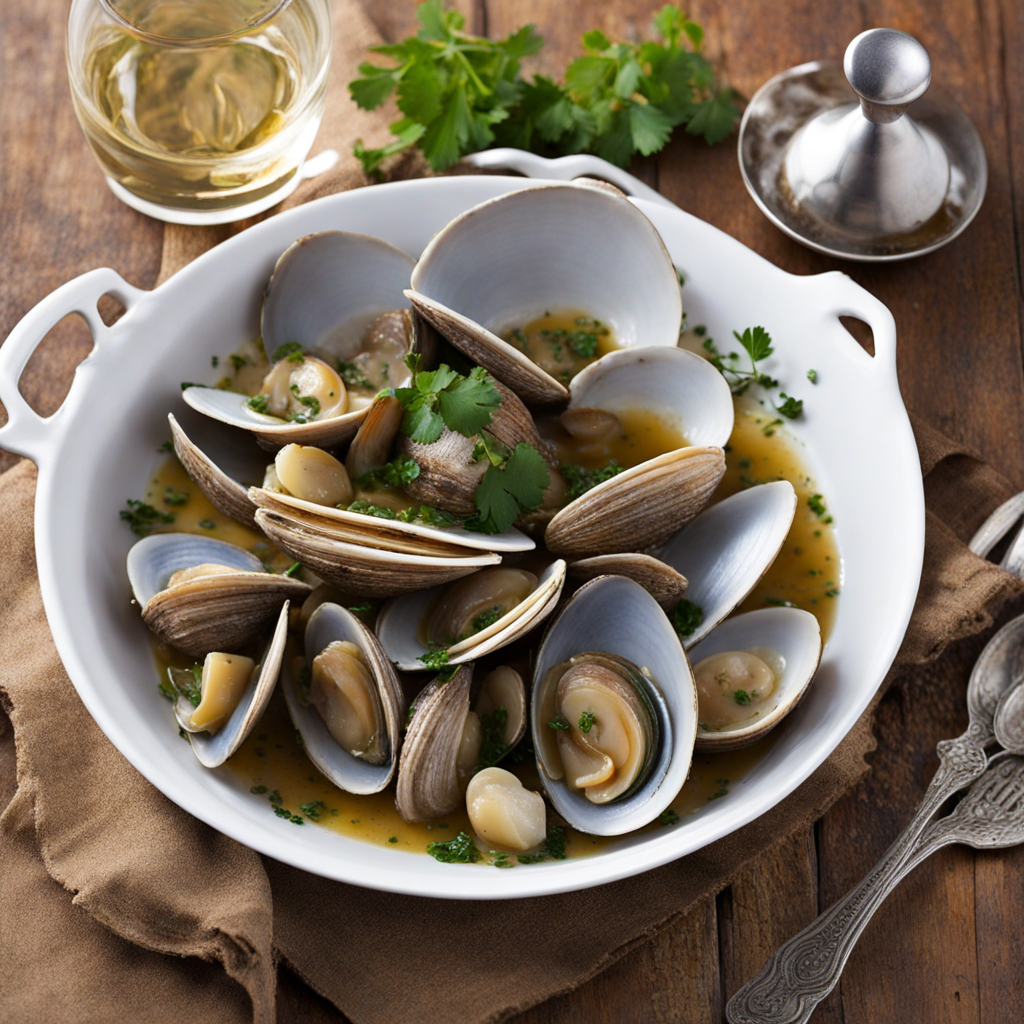Tripas à Moda do Porto
Tripas à Moda do Porto is a traditional Portuguese dish hailing from the bustling city of Porto. This hearty recipe features tripe, the edible lining of the stomachs of various animals, which is renowned for its unique texture and ability to absorb flavors. The dish is typically slow-cooked to perfection, allowing the tripe to become tender and soak in the rich, savory broth. The combination of spices, which often includes paprika, garlic, and bay leaves, creates a fragrant and aromatic experience, making each bite a delightful journey through layers of flavor. Accompanying the tripe is a medley of vegetables, such as onions, carrots, and sometimes even white beans, which add color, nutrition, and depth to the dish. The vegetables meld seamlessly with the tripe, enhancing the overall taste profile while providing a comforting, rustic feel. Traditionally served with a side of rice or crusty bread, Tripas à Moda do Porto is perfect for soaking up the flavorful sauce, making it an ideal choice for those who appreciate hearty, home-cooked meals. This dish is not only a testament to Portuguese culinary tradition but also a celebration of the region's history, as it reflects the resourcefulness of the local people who transformed humble ingredients into a beloved classic. Enjoying Tripas à Moda do Porto is more than just a meal; it’s an invitation to savor the rich cultural heritage of Porto, where every bite tells a story of the past and the flavors of the present.
How It Became This Dish
Tripas à Moda do Porto: A Culinary Journey Through Tradition and History #### Origins Tripas à Moda do Porto, often simply referred to as "tripas," is a traditional dish that hails from Porto, Portugal. At its core, the dish consists of tripe, which is the edible lining of the stomachs of various farm animals, particularly cows. However, the origins of this dish are steeped in both history and cultural significance, making it more than just a meal; it is a symbol of the city itself. The story of Tripas à Moda do Porto can be traced back to the 15th century when the city began to flourish as a major port and trade center. During this time, the Portuguese were known for their explorations and maritime expeditions. The allure of newfound territories brought a wealth of spices, ingredients, and culinary influences to Portugal, reshaping its gastronomic landscape. However, it was also a period of hardship, particularly for the poorer classes. As maritime trade grew, so did the need for provisions for sailors. The wealthier citizens retained the choicest cuts of meat, leaving the less desirable parts, including tripe, for the working class. Tripe was often regarded as a peasant food, consumed by those who had little access to more luxurious ingredients. However, rather than being seen as a mark of poverty, it became emblematic of resilience and resourcefulness. The people of Porto learned to transform this humble ingredient into something hearty and flavorful, resulting in the dish we know today. #### Cultural Significance Tripas à Moda do Porto is more than just a dish; it is a cultural artifact that embodies the spirit of the city. The dish is deeply tied to Porto's identity, celebrated not only for its flavor but also for its historical roots. The preparation of tripas is often associated with communal gatherings, family traditions, and festive occasions. Perhaps the most significant event that cemented the place of Tripas à Moda do Porto in the city's culinary heritage occurred in the early 20th century. In 1908, Porto was honored with the title of "Invicta" (Undefeated) in recognition of its resilience during the Portuguese Civil War. To celebrate this honor, the local population made a collective decision to prepare and serve tripas to the city's inhabitants, further solidifying its status as a beloved dish. Since then, it has been served during local festivals, family gatherings, and special occasions, including the Feast of Saint John, one of Porto's most vibrant celebrations. The dish also carries with it a sense of communal identity. In many households, the preparation of Tripas à Moda do Porto is a family affair, with recipes often passed down through generations. Each family may have its variations, incorporating regional ingredients or personal touches, but the essence of the dish remains the same: hearty, satisfying, and steeped in tradition. #### Ingredients and Preparation The preparation of Tripas à Moda do Porto is a labor of love, often taking several hours to achieve the desired flavors and textures. The key ingredient, tripe, is thoroughly cleaned and simmered to tenderize it. The dish typically features a rich combination of ingredients, including beans (often white beans), chorizo, and various spices like paprika, garlic, and bay leaves. The addition of vegetables such as onions, carrots, and sometimes potatoes enhances the dish's heartiness. The cooking process begins with the tripe being boiled until tender, then sautéed with onions and garlic before incorporating the other ingredients. The dish is slow-cooked for several hours, allowing the flavors to meld beautifully. The result is a fragrant stew that is both filling and deeply comforting, often served with crusty bread to soak up the savory broth. #### Evolution Over Time As Porto transitioned into the modern era, the dish of Tripas à Moda do Porto continued to evolve while retaining its traditional roots. In the mid-20th century, the dish gained popularity beyond the borders of Porto, as Portuguese immigrants carried their culinary heritage with them to other parts of the world. In places like Brazil, the United States, and France, variations of tripas emerged, reflecting local tastes and available ingredients. In Porto itself, the dish has seen a resurgence in popularity, particularly in the context of the contemporary food movement that emphasizes local and traditional cooking. Chefs in Porto have embraced the dish, often reinterpreting it in innovative ways while respecting its origins. Some modern restaurants have taken to serving Tripas à Moda do Porto as part of a tasting menu, showcasing the dish alongside other traditional Portuguese flavors, allowing new generations to appreciate its history and significance. Furthermore, the growing interest in "nose-to-tail" eating has brought renewed attention to tripe and other offal, which were once marginalized in culinary circles. Chefs and home cooks alike are rediscovering the versatility and depth of flavor that tripe can provide, leading to a renaissance of traditional dishes like Tripas à Moda do Porto. #### Conclusion Tripas à Moda do Porto stands as a testament to the resilience and creativity of the people of Porto. What once began as a humble dish, born out of necessity, has evolved into a cherished culinary tradition that encapsulates the city’s history and culture. Through its rich flavors, communal ties, and enduring legacy, Tripas à Moda do Porto serves as a delicious reminder of the past while continuing to adapt and flourish in the contemporary culinary landscape. Today, when one enjoys a bowl of Tripas à Moda do Porto, they are not just tasting food; they are savoring the history, struggles, and triumphs of the people of Porto, all encapsulated within one hearty dish. As the city continues to grow and change, the legacy of tripas remains a comforting constant, a delicious nod to the past that will undoubtedly continue to inspire future generations.
You may like
Discover local flavors from Portugal







